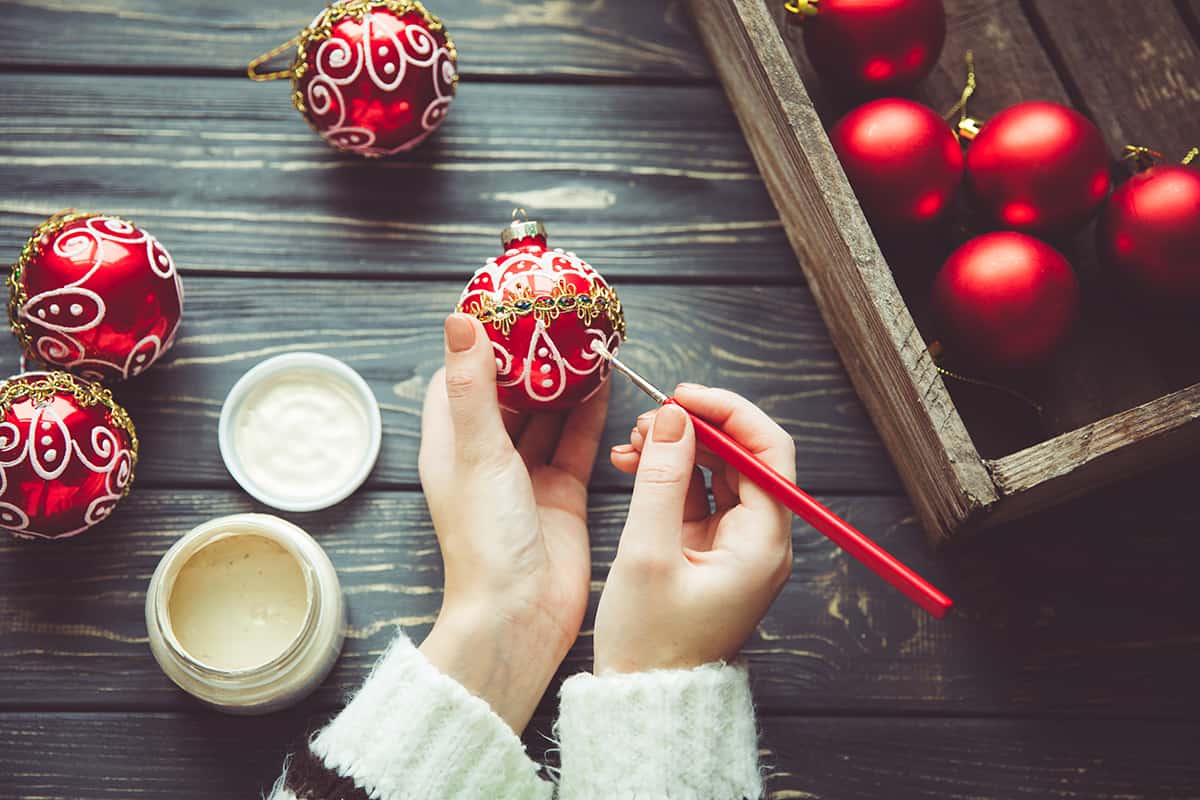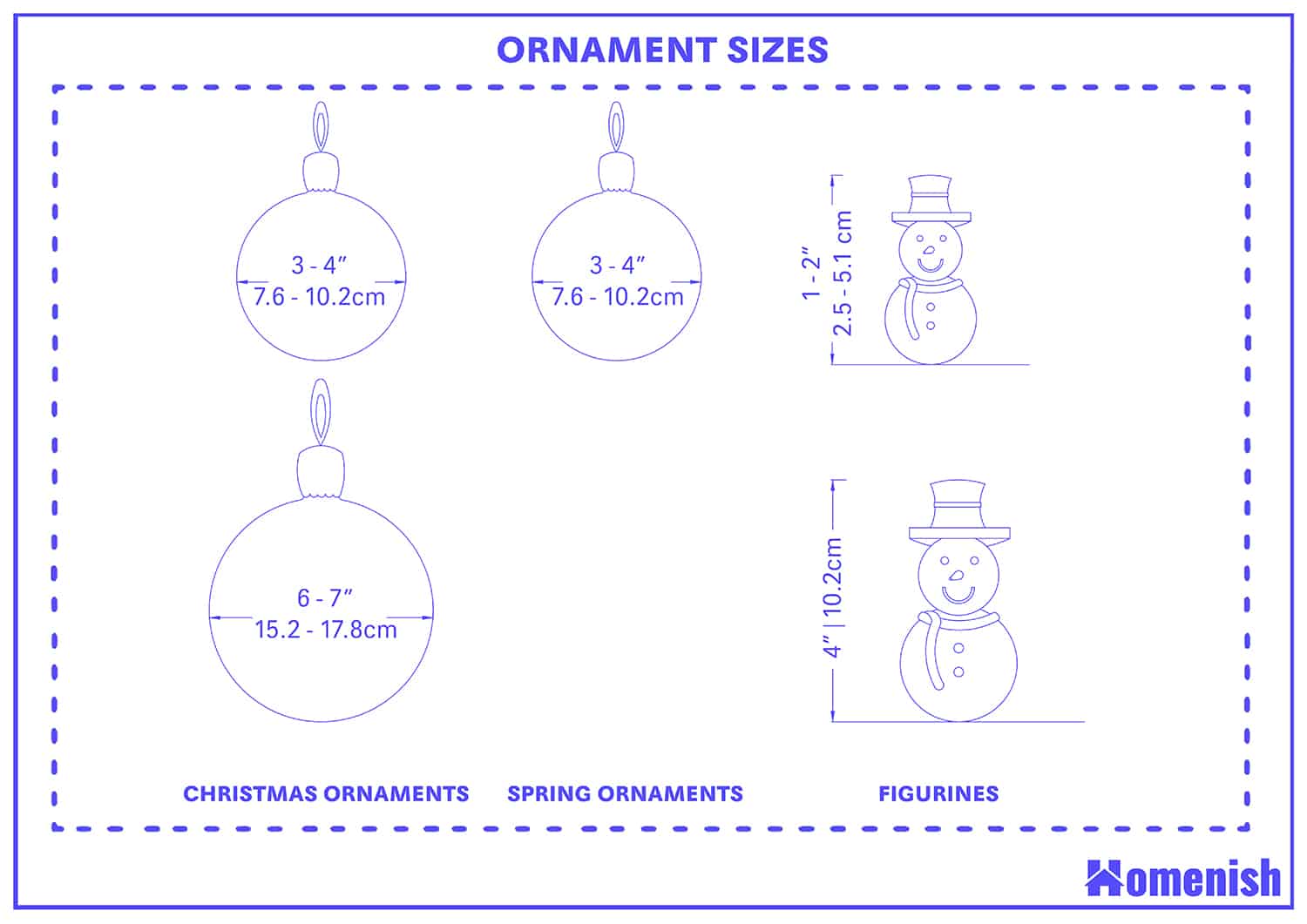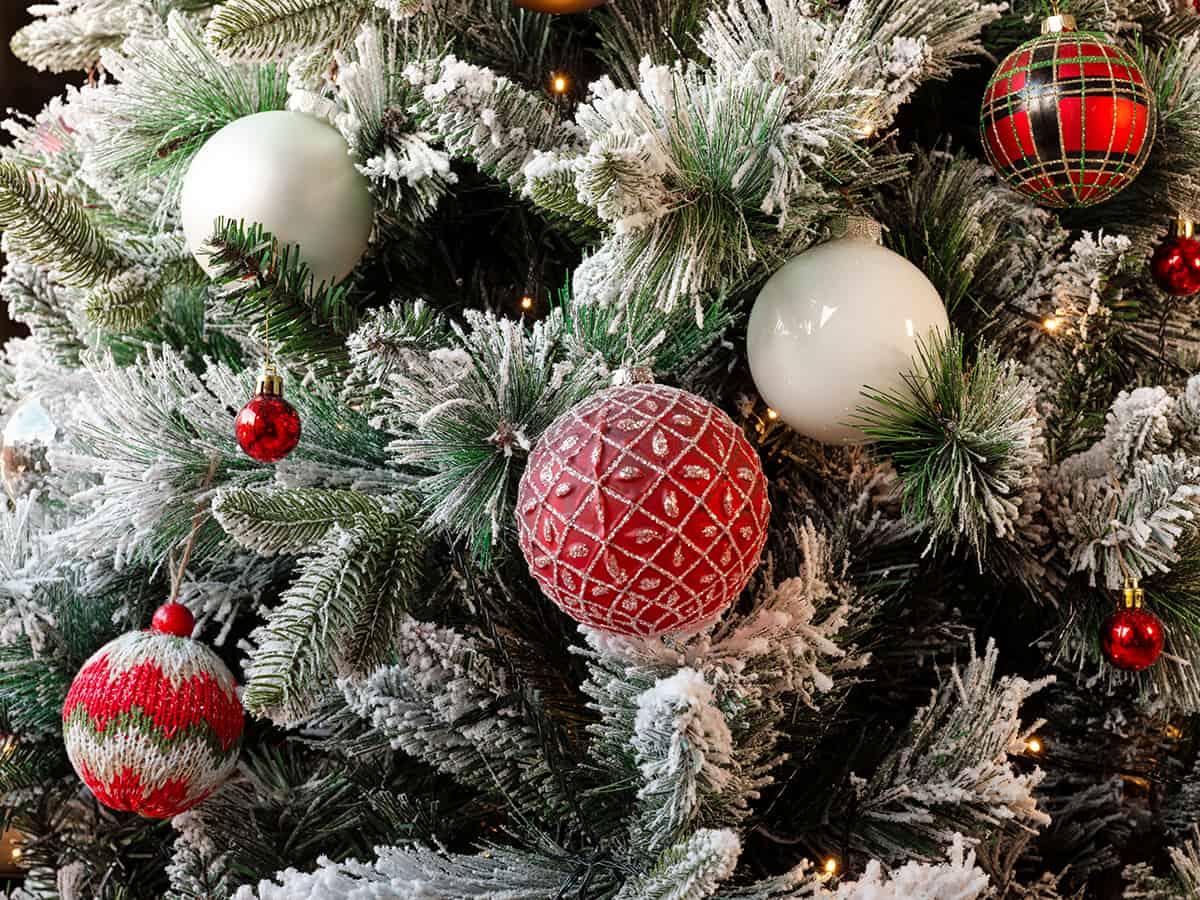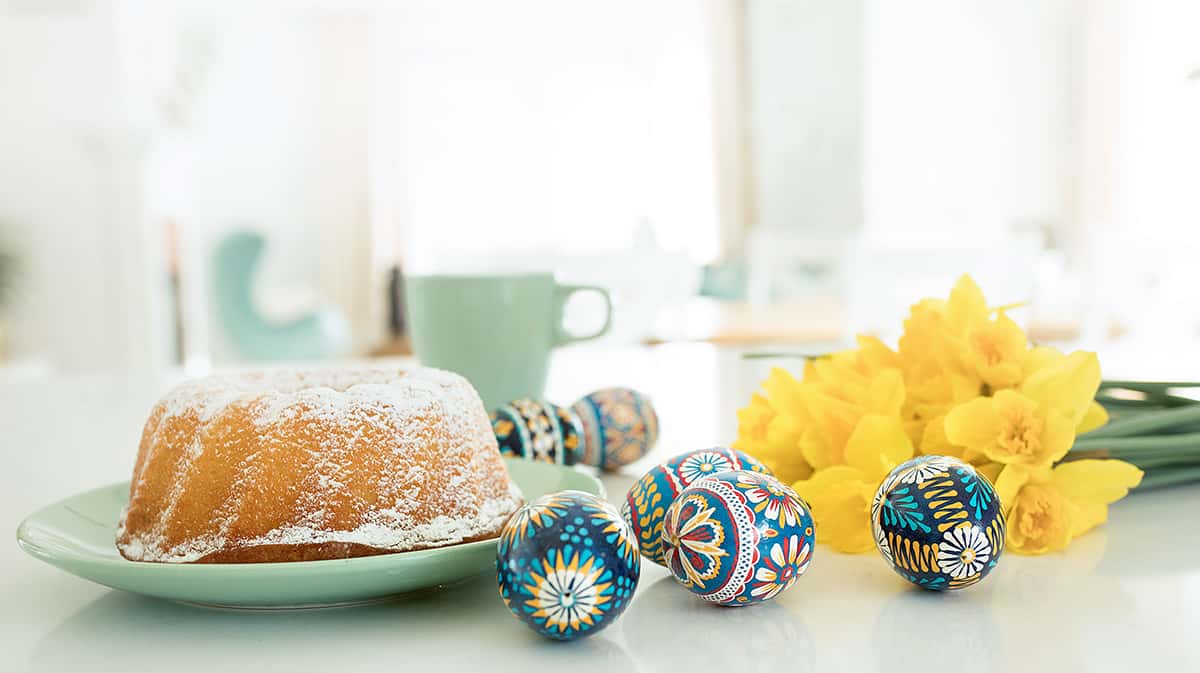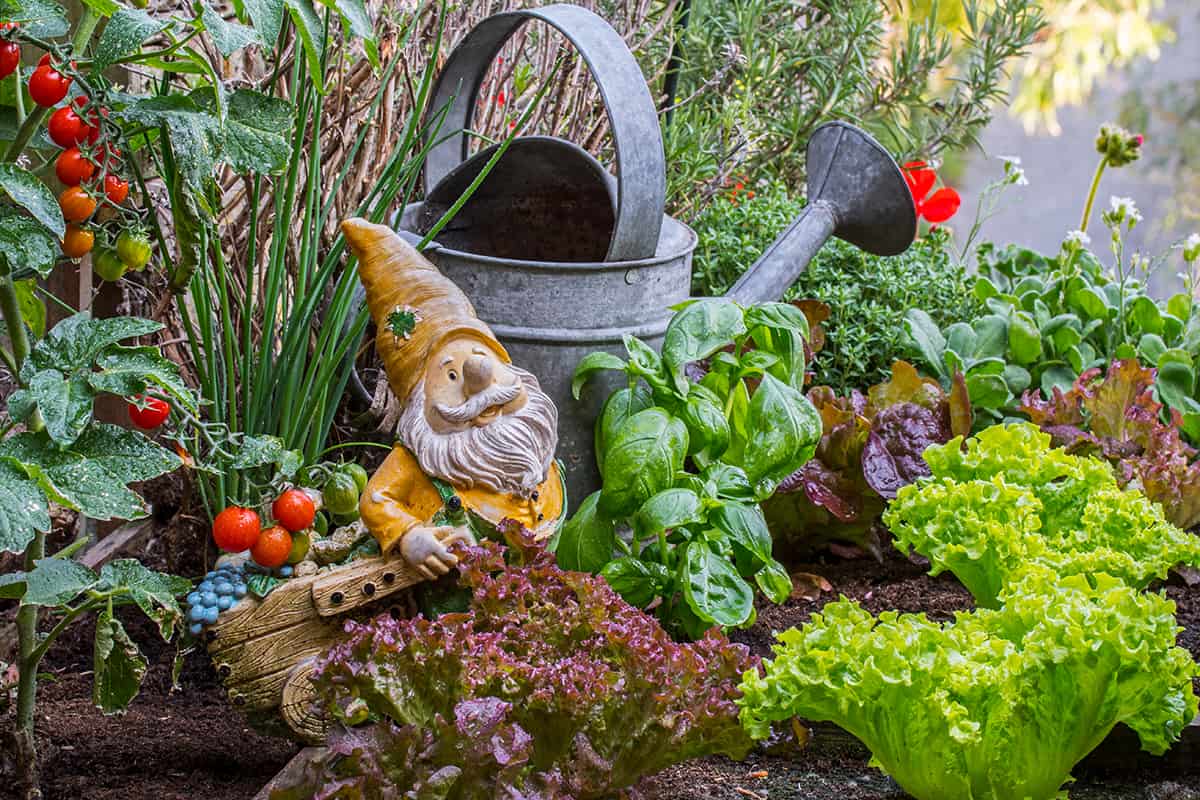If you are decorating your home, then you might be thinking about investing in some ornaments to make the space look more appealing or add a touch of personality and color.
Here we consider standard ornament size and other aspects of ornaments you may be curious about.
What is an Ornament?
An ornament is a type of embellishment or decorative item that is used to make something look more attractive. An ornament will typically not have any other purpose aside from being purely aesthetic.
For example, a small porcelain figurine of a dog would be considered an ornament, as its only purpose is to make the shelf it is on look more attractive, whereas a candle on the same shelf would not be considered an ornament because it also has the functional use of being burnt to create light, atmosphere, or a scent.
There are lots of different types of ornaments, but when most people think of ornaments, they will instantly think of Christmas ornaments that are hung from a tree over the festive period. Ornaments can be made from a wide range of different materials, including glass, ceramics, wood, leather, metal, and fabric.
They can also come in any size, so there is no standard size of ornament, although there are more common and popular sizes that could be considered to be the standard size.
Types of Ornaments and Sizes
Christmas Ornaments
Christmas ornaments are the most popular type of ornaments in North America. A large proportion of people erect a Christmas tree in their home over the festive period and decorate it with a variety of ornaments in line with tradition.
You can opt for a real Christmas tree that has been chopped down from a Christmas tree farm, or you can get a faux Christmas tree made from synthetic fibers, which some people consider to be more environmentally friendly because the faux trees can be used over and over again, unlike ‘real’ Christmas trees that use a lot of water and energy to grow, and are then usually discarded once Christmas is over.
As well as installing a Christmas tree in your home, you may also put one out on your porch or in your yard. Many places of work, such as offices, will get into the festive spirit and erect a tree to decorate, and you will likely see plenty of Christmas trees adorned with ornaments in public places during December, such as shopping malls, libraries, schools, and theaters.
The tradition of decorating homes with greenery started long before Christmas trees became popular. In fact, it is believed that civilizations as far back as the Egyptians adorned their homes with boughs of evergreen during the winter solstice as a means of creating hope and comfort during long, dark winter days. The hanging of ornaments on Christmas trees dates back to 16th century Europe.
During the 1500s, churches in Germany decorated small evergreen trees with nuts, berries, and candles. As time passed, Christians began to adopt this practice in their homes during the festive season, and it spread across Europe as a Christian ritual.
In 18th and 19th century America, German settlers brought the idea of the adorned Christmas tree with them, but the idea was instantly rejected due to its links with paganism. However, in 1840, a photograph of Queen Victoria and her family alongside a decorated Christmas tree was published, and as such, the practice was soon adopted by wealthy Americans, and it quickly spread to become the tradition we know today, celebrated by people with different cultures and faiths.
Originally ornaments created for Christmas trees in America were imported from Germany and made from glass and lead. Today, ornaments for Christmas trees are usually made from glass, plastic, wood, or metal. Baubles are by far the most popular type of Christmas ornament, and the average diameter of a bauble is between 3 and 4 inches.
Larger baubles can be as wide as 6 or 7 inches in diameter, but these are usually reserved for oversized Christmas trees in commercial settings. Some people also like to hang small bauble ornaments on their Christmas trees, which can be as small as 1 inch in diameter. Small baubles look best on compact Christmas trees or when hung from the upper portion of a large Christmas tree.
Spring Ornaments
Spring ornaments are a popular way to celebrate the arrival of warmer weather and new beginnings. You can use outdoor spring ornaments to decorate the trees and shrubs growing in your yard, or you could hang spring ornaments on a wreath on your front door.
Many spring ornaments follow a floral theme since spring is associated with flowers blooming. Spring ornaments can also be found that are based on Easter, as this is the most prominent holiday for many people during spring. Spring ornaments usually have a small loop of twine they can be hung with or a hook or clip so they can grip onto the item they are decorating.
Examples of spring ornaments include pastel-colored Easter egg baubles, pastel-colored hanging floral ornaments, and wildlife-themed decorations based around chicks, bunny rabbits, bees, and butterflies.
Spring ornaments will be a similar size to Christmas ornaments, with the average size coming out at around 3.5 inches. Larger spring ornaments are available if other sizes would work better for your visual spring displays.
Figurines
Ornamental figurines can be made from porcelain, ceramics, wood, metal, clay, or glass. Some people collect figurine ornaments following a specific theme. For example, a collection of cat figurines or a collection of ballet figurines.
Figurine ornaments are most commonly based on animals or humans. There is no standard size of figurine, and they can start from miniature figurines measuring 1 to 2 inches in height, right up to extra large figurines that are designed to be positioned on the floor rather than on a shelf or furniture surface, and these can be 4 feet in height or even bigger.
